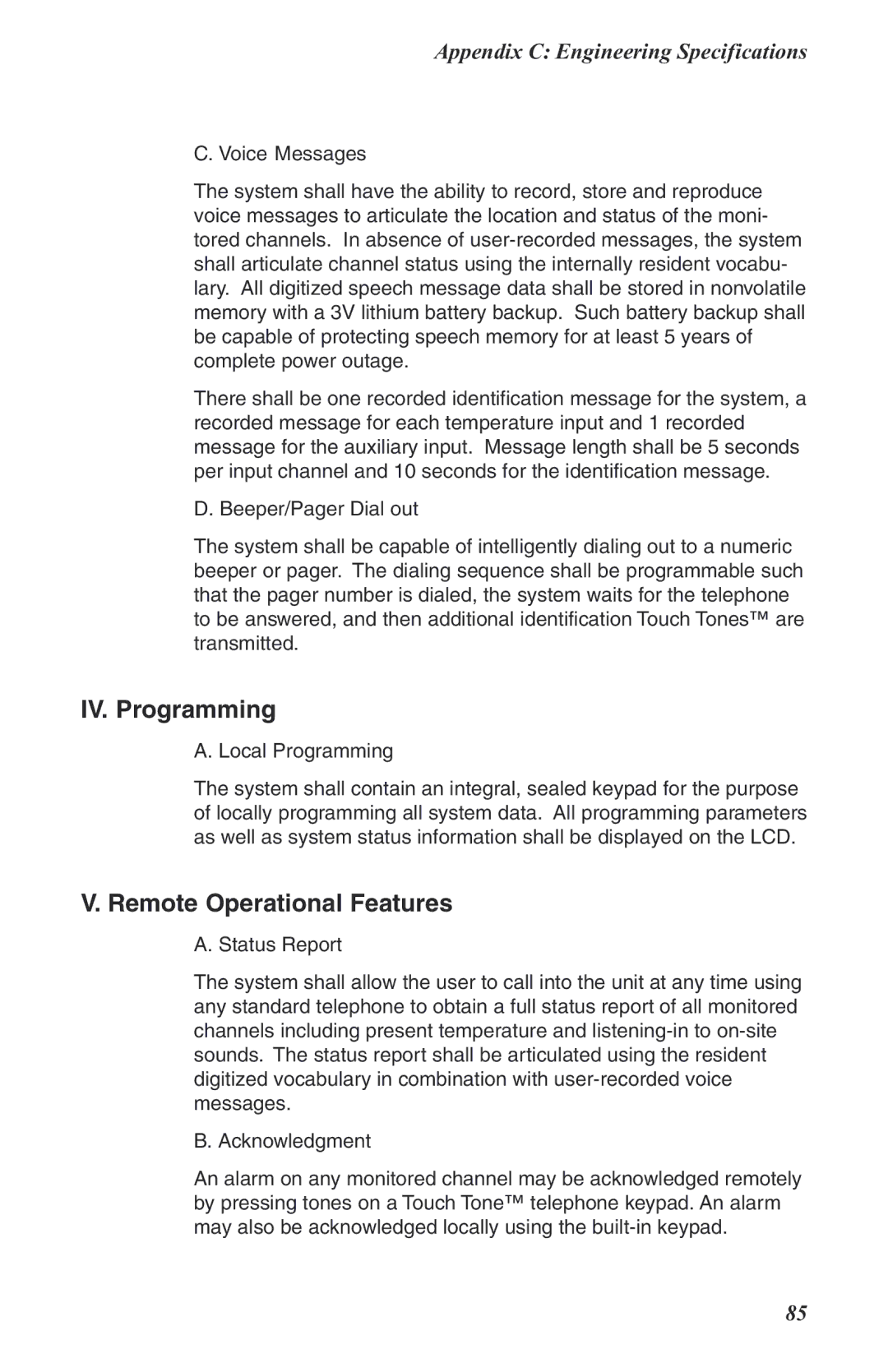Appendix C: Engineering Specifications
C. Voice Messages
The system shall have the ability to record, store and reproduce voice messages to articulate the location and status of the moni- tored channels. In absence of
There shall be one recorded identification message for the system, a recorded message for each temperature input and 1 recorded message for the auxiliary input. Message length shall be 5 seconds per input channel and 10 seconds for the identification message.
D. Beeper/Pager Dial out
The system shall be capable of intelligently dialing out to a numeric beeper or pager. The dialing sequence shall be programmable such that the pager number is dialed, the system waits for the telephone to be answered, and then additional identification Touch Tones™ are transmitted.
IV. Programming
A. Local Programming
The system shall contain an integral, sealed keypad for the purpose of locally programming all system data. All programming parameters as well as system status information shall be displayed on the LCD.
V. Remote Operational Features
A. Status Report
The system shall allow the user to call into the unit at any time using any standard telephone to obtain a full status report of all monitored channels including present temperature and
B. Acknowledgment
An alarm on any monitored channel may be acknowledged remotely by pressing tones on a Touch Tone™ telephone keypad. An alarm may also be acknowledged locally using the
85
